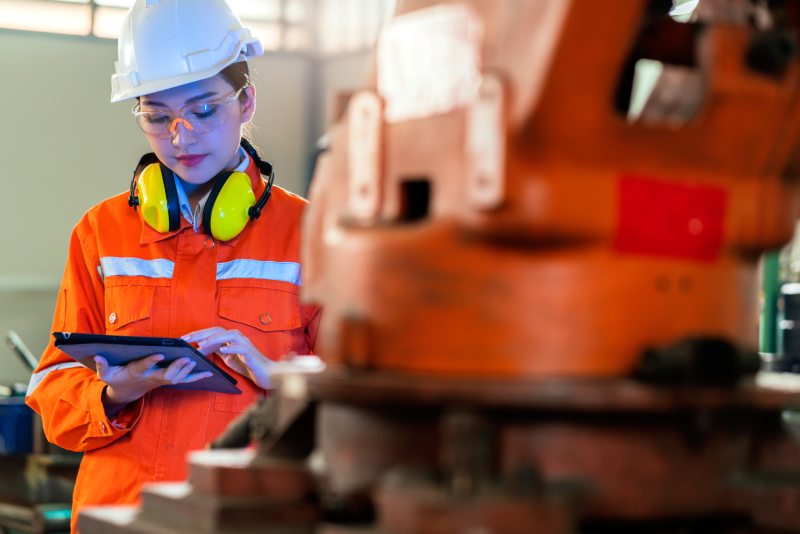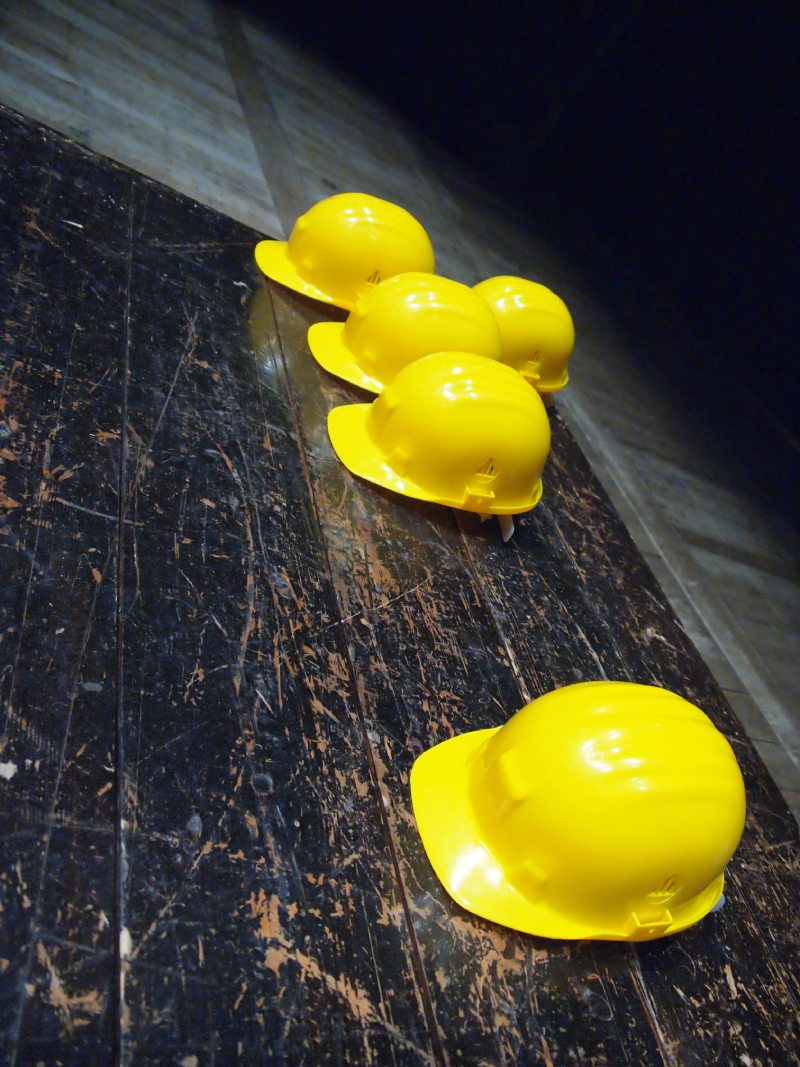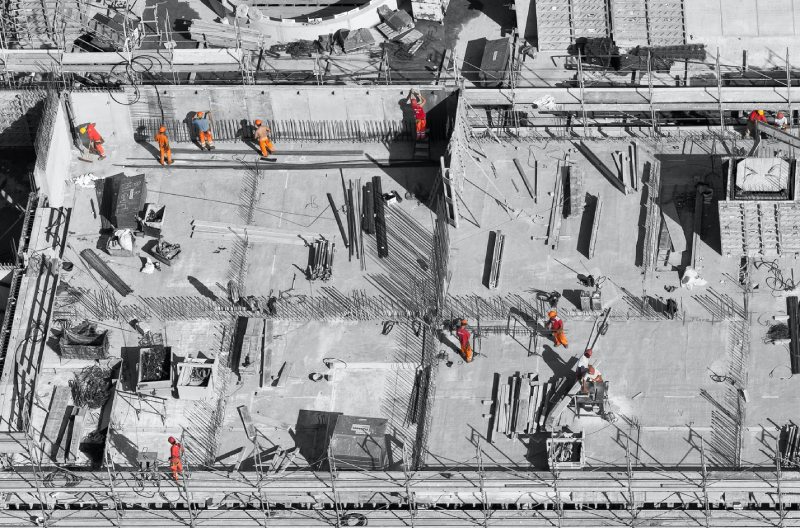
Here’s What You Need to Know About IoT in Construction

The construction industry has become increasingly technologically advanced, so it’s hardly surprising that IoT is taking off.
The global population is rising, and urbanization is in full swing, so the construction industry has never been more critical. Last year, the construction market was valued at $7.28 trillion. However, the construction industry hasn’t had it easy.
Not only does the construction industry have one of the highest fatal injury rates in the world due to on-the-job hazards, but it’s also facing a significant skills shortage. When the recession hit, countless workers left and never returned. Then, when the pandemic hit, many boomers retired, leaving massive gaps in the workforce.
The construction industry also faces challenges on a smaller scale. After all, there are tons of moving parts in every project. So, on-budget, on-time project delivery is often a dream rather than a reality. Many companies are turning to IoT technology to make day-to-day operations easier, more efficient, and cheaper.

What Does IoT Stand for in Construction?
Before diving into how IoT is used in construction, let’s first go over what IoT means. IoT stands for Internet of Things. The term refers to a network of physical devices embedded with electronics, connectivity, sensors, and software that enables them to connect and exchange data. Anything from a vehicle to a kitchen appliance can be considered an IoT device if combined with software or devices.
IoT is digitizing various processes in the construction industry, improving project efficiency, optimizing resource usage, and lowering costs and risks. Companies use internet-connected sensors to collect information on workers’ activity, work conditions, performance, various assets, and more. This gives them a comprehensive understanding of their construction site and allows them to make data-based decisions that reduce construction time and costs.
What Are the Applications of IoT in the Construction Industry?
Construction companies are beginning to use IoT to gain a complete picture of their construction sites in real time. They’re also using IoT technology to improve worker safety, optimize resource utilization, and overcome various construction business challenges. More specifically, applications of IoT in construction include:
- Sensors: Used to monitor construction sites, IoT sensors are changing the game for construction companies. Not only can sensors help keep workers safe, but they can also help construction site managers monitor pressure, temperature, and humidity. Sensors can help site managers anticipate potential damage, quickly respond to on-site accidents, and know when to order new materials.

- Wearables: When it comes to the application of IoT in the construction industry, wearables are also on the rise. Construction workers wearing these devices can often avoid injury. For example, if a worker wearing an IoT watch or helmet nears a dangerous zone, their device will alert them. Wearables can also be used to deliver real-time instructions to workers or help locate them if an injury or disaster occurs. As a bonus, wearables increase workplace satisfaction and productivity.
- Maintenance Systems: Tracking construction expenses can get complicated quickly, but there are a few maintenance systems that, in combination with IoT devices, simplify the process. For example, Bimba can track machine downtime and data on the construction site in real-time, giving site managers the information they need.
- Real-Time Sitemaps: Another common application of IoT in the construction industry is real-time sitemaps, which can make all the difference in protecting workers. IoT technology can locate workers in real-time on the site and give site managers a clear idea of who’s working where. Plus, they can also help prevent workers from entering the danger zone. Real-time sitemaps will tell site managers what work is being done (and where), simplifying project management.
What Are the Benefits of IoT in Building Construction?
The benefits of Internet of Things in the construction industry are plentiful. Most notably, IoT technology can help when it comes to worker safety.
The injury rate in the construction industry is 71% higher than the average injury rate across all sectors. Luckily, IoT can reduce the chances of worker injuries.
For example, a worker might wear a real-time IoT device capable of transmitting their location to a central control room, while a heavy machine on the construction site might have a real-time movement detector chip installed. This makes it easy for a heavy machine to automatically stop if movement is detected close by or someone’s wearable is detected near the equipment.
IoT devices can also send on-site emergency alerts to workers to keep them in the loop. They can even track a worker’s breathing and heart rates, and alert the necessary personnel if someone has unusual readings.
However, IoT isn’t just useful in improving worksite safety. It can also increase worksite productivity. IoT sensors can collect workplace insights that site managers might not otherwise have access to, such as the exact time it takes workers to complete a task or the stock in real-time, giving them the ability to make informed decisions to improve efficiency. Scheduling will be simpler, and managers can proactively order new supplies. IoT can help optimize transit routes, vehicle maintenance, and remotely operated machine control precision.
IoT also comes in handy for resource management and budgeting. After all, decision-makers can see where and how long workers are working, allowing them to create efficient schedules and eliminate idling. The high visibility that IoT technology provides on a site will also enable project managers to locate areas to cut costs and determine areas where more or fewer resources are needed. IoT will also help managers ensure equipment, building materials, and other resources are delivered on time.

What is the Future of IoT in Construction?
While some tech-savvy people have already started adopting IoT technology, many project managers and investors remain skeptical of the benefits of IoT, often due to a lack of knowledge. IoT in the construction industry only generated $4.4 billion in 2019, but it will only grow from here.
An Allied Market Research study predicts that the global investment for IoT in construction will top $19 billion by 2027. So, it looks like IoT in building construction is here to stay — and that’s a good thing.
As more people adopt IoT over the coming years, worksites will become safer, more productive, and increasingly predictable. With the help of IoT technology in the construction industry, project managers can improve everything from resource management to theft prevention to worker safety.
IoT in Building Construction is Here to Stay
Between the increasing demand for new buildings and infrastructure, the shortage of workers, and the rising costs of everything from wood to vehicles, the construction industry is under pressure. Many construction companies are starting to adopt IoT technology to overcome many workplace challenges and make operations more efficient.
After all, IoT can improve maintenance, safety, and security and boost worksite productivity. IoT can even help when it comes to getting site managers vital information about working conditions or sending emergency alerts to workers immediately. It’s a win-win, so it’s hardly surprising that IoT technology is only going to grow in popularity from here.
It’s undeniable that IoT devices have a large role to play in the construction industry. However, there’s more to having on-budget, on-time project delivery than just IoT devices. Construction companies also need access to quality, affordable construction materials from reliable vendors. That’s where AMAST comes in.
AMAST is a B2B online marketplace for construction materials that can connect you to credible vendors with exactly what you need, whether that’s lumber, siding, or windows. Get started with AMAST today!